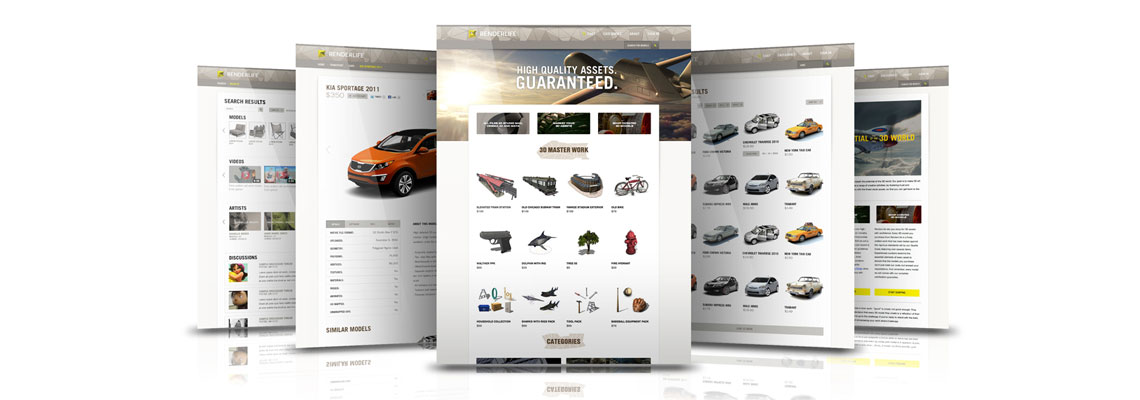How RenderLife Failed
Update: Feb 2020
After five years, this was reposted on social media after spending time talking about the experience with the community. Below are my reflections over the past five years, and then the original post. Please enjoy, share and take the time to reflect on your own journey.
There’s been a lot of reflection on being a tech founder recently which has me reflecting on my near-decade as a solo tech founder. From building our mountain, raising $2.2mm, leading an acquisition, then having my company fail, laying off my meticulously curated team and the long-term effects these events have taken on my mental health.
This piece was written to the nascent TO tech community when we wound down in 2015. I wanted to share it again, five years later, with the new cohort of founders starting their companies in our thriving ecosystem. This is a reminder that raising cash isn’t the most important part of your job, that the best-laid plans can be for naught, that you need to listen to your body for signs of burnout and to actively monitor your mental health on a near-daily basis.
I’ve been particularly hard on myself for this failure, repressing all the anger, shame, and embarrassment that came with it. It is only now coming out to be properly dealt with, those demons don’t go away, they get worse with time as self-doubt builds and builds until it comes crashing down, taking you with it.
Like an NHL player who’s body is beaten and bruised over the season, founder’s minds are exposed to the same level of grueling punishment. As a leader, it’s critical to take time and let your mind recuperate so you can truly lead your incredible teams to wondrous success.
Original Post
Starting a company and trying to change the world isn’t easy.
RenderLife is winding down. No easy exit, no soft landing. We simply failed.
Ideas were explored, concepts were tried, conventions were challenged. Our team worked tirelessly on building world-leading 3D content, juggling the phones connecting buyers with sellers, networking and partnering with some of the industry’s best and brightest, and consistently launching new iterations of our marketplace software platform.
Building a business is hard. Building a technological business around user-generated content is even harder. While we had a great concept, amazing product, and a strong technical team, we simply weren’t able to get enough dollars flowing from our marketplace to cover our expenses. Although we achieved a lot with RenderLife, we failed to create a scalable business. RenderLife didn’t scale because we were dependent on a single channel for too long. Our focus was too narrow at the start which blinded us to larger opportunities. I took the blinders off too late and tried to make a list ditch course correction but by that time we had run out of capital. I lead us to focus on sales initiatives, and not marketing initiatives, which limited awareness within our core audience. Mass marketing was the right solution for our company, and I started it too late.
I received lots of conflicting advice from lots of very smart people. The mistake I made was acting on some of it, without internalizing the advice and listening to my gut. By the time I learned that it was the beginning of the end.
One year ago I started to feel burnt out. I was RenderLife’s founder, leader, and new CEO, but the problem with burnout is that you become hopeless; you lose your creativity. I’d go to work feeling tired and exhausted, I was entering into a spiral of depression. I lost two friends to this venture, countless hours of sleep and 10 pounds. There are not many people who know the pain of failing as a private-equity backed CEO. I not only let down my employees and our partners but the people who believed in my idea the most; our investors. Although I’ve let both constituents down, I’m buoyed by the knowledge that they taught me how to build a business, be an effective leader and become a CEO. I’m proud of the amazing team we built, their dedication and their passion. They created some incredible content and breakthrough ideas.
What’s next for me? That’s a good question. This is the first time in over 10 years that I’ve faced a blank slate. I don’t have that next great idea lined up, and to be honest, I am not chomping to launch a new startup. Time will be needed to decompress and reflect on what has occurred over the years. I did just get a very focused, three and a half year education on leadership, management, failure, corporate governance and how to raise $2,200,000 off of a really well-designed pitch deck.
I want to thank my team over the years, there are no words to describe how amazing you all are. You believed in me and my idea and worked tirelessly to bring it to life. To my senior advisor – Mike G – I’ve learned more about the nuances and details of running a business in the last year than in my previous nine years as an entrepreneur. To my investors, I could not have done this without you, thank you for taking a chance on me. To my friends, family and everyone else who supported us over the years, from the bottom of my heart, I can’t say it enough; Thank you.
This journey has been amazing, but now, it’s better to burn out than to fade away.
Cheers,
j
— – —
RenderLife’s seven deadly sins:
1. We didn’t sell enough.
2. We didn’t focus on marketing until it was too late.
3. We didn’t focus on discovering other revenue sources.
4. We focused too much on an unsustainable quality system with high staffing overheads.
5. I made compromises in hiring decisions, choosing expediency over competency and talent.
6. I stuck with the wrong strategy for too long.
7. I didn’t fail fast enough.
RenderLife by the numbers:
– 2 CEO’s
– 4.5 years.
– 5 investors.
– 15 employees.
– 758 Hollywood quality 3D assets.
– 86,547 lines of code.
– $2,200,000 raised
Check out the RenderLife brand and wed design in our portfolio here.






